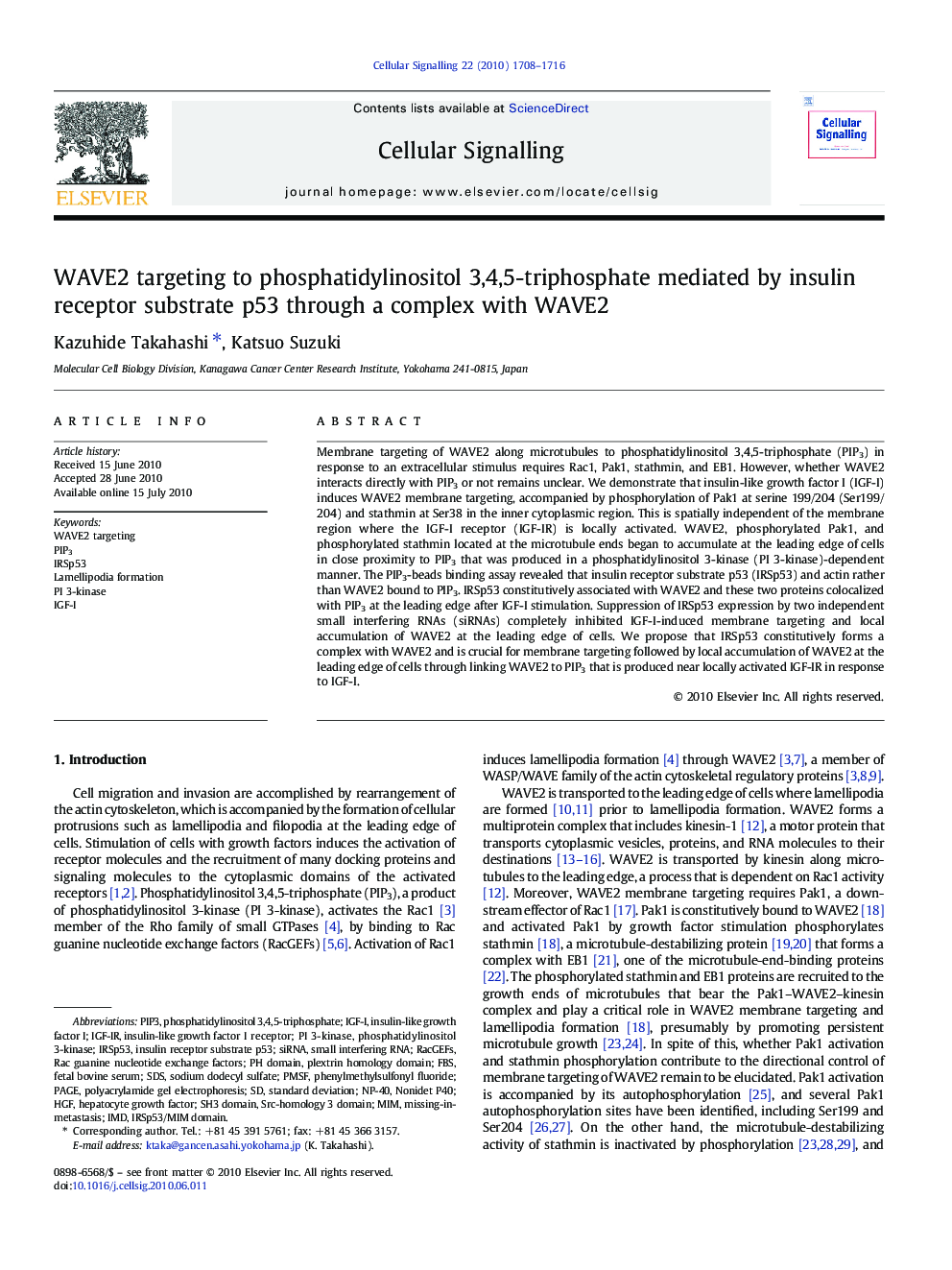| Article ID | Journal | Published Year | Pages | File Type |
|---|---|---|---|---|
| 1964799 | Cellular Signalling | 2010 | 9 Pages |
Membrane targeting of WAVE2 along microtubules to phosphatidylinositol 3,4,5-triphosphate (PIP3) in response to an extracellular stimulus requires Rac1, Pak1, stathmin, and EB1. However, whether WAVE2 interacts directly with PIP3 or not remains unclear. We demonstrate that insulin-like growth factor I (IGF-I) induces WAVE2 membrane targeting, accompanied by phosphorylation of Pak1 at serine 199/204 (Ser199/204) and stathmin at Ser38 in the inner cytoplasmic region. This is spatially independent of the membrane region where the IGF-I receptor (IGF-IR) is locally activated. WAVE2, phosphorylated Pak1, and phosphorylated stathmin located at the microtubule ends began to accumulate at the leading edge of cells in close proximity to PIP3 that was produced in a phosphatidylinositol 3-kinase (PI 3-kinase)-dependent manner. The PIP3-beads binding assay revealed that insulin receptor substrate p53 (IRSp53) and actin rather than WAVE2 bound to PIP3. IRSp53 constitutively associated with WAVE2 and these two proteins colocalized with PIP3 at the leading edge after IGF-I stimulation. Suppression of IRSp53 expression by two independent small interfering RNAs (siRNAs) completely inhibited IGF-I-induced membrane targeting and local accumulation of WAVE2 at the leading edge of cells. We propose that IRSp53 constitutively forms a complex with WAVE2 and is crucial for membrane targeting followed by local accumulation of WAVE2 at the leading edge of cells through linking WAVE2 to PIP3 that is produced near locally activated IGF-IR in response to IGF-I.
